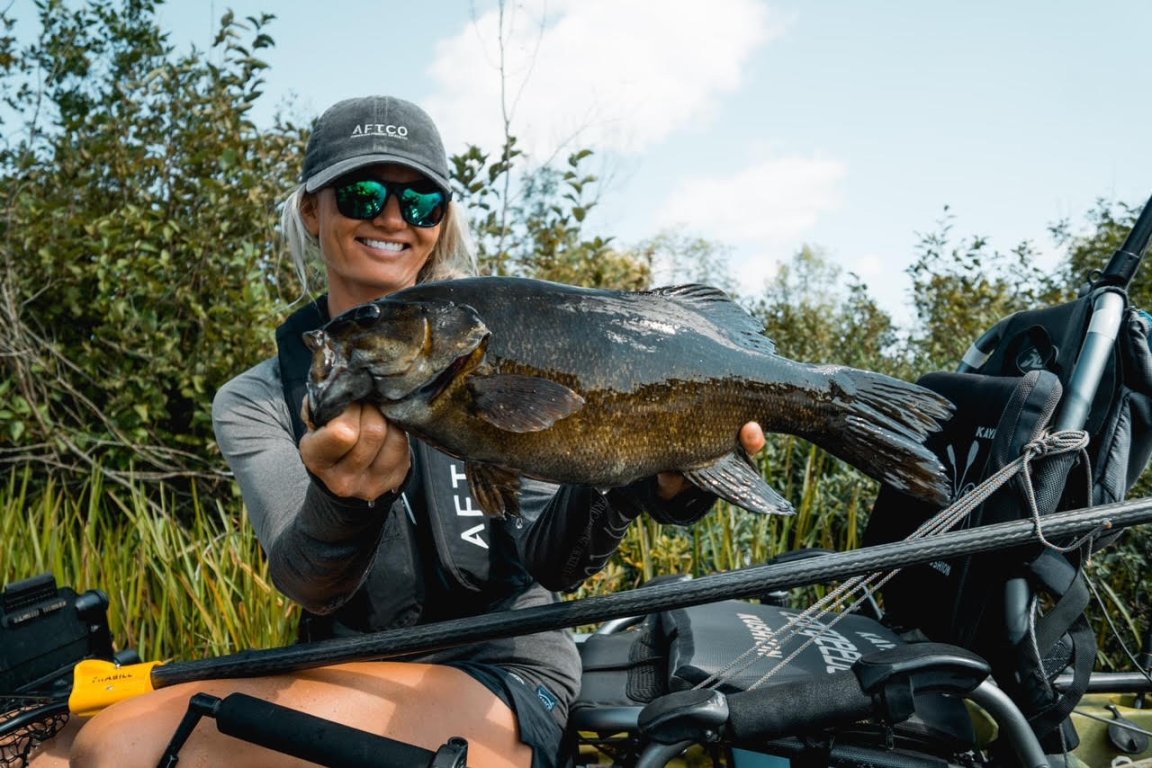As a tournament angler, one of the most frequent questions I get is how to fish large bodies of water in a kayak. Most folks jump to the conclusion that a kayak limits how much water I can cover. There is some truth to that, but it doesn’t stop me from successfully fishing big water, either. There are a few different ways to prepare on the front end before hitting the water that can lead to success. Here’s my own playbook for breaking down big lakes and reservoirs. These tips will help you identify bass habitat so you can find the fish faster.
1. Use Google Earth Pro
Start by installing Google Earth Pro to your laptop or desktop. This app is probably one of my favorite tools when it comes to breaking down new water because it has a unique feature that allows you to turn back time and view the lake during different months. This comes in handy when you’re fishing lakes that undergo a winter draw down so you can scan the banks and look for old creek channels, laydowns, structure, rock, etc. These are all places fish congregate when those structures are underwater in the spring and summer months. This plays a significant role when I’m looking for diversity in an area.
Another thing you can do with Google Earth is look for a specific structure. Let’s say you’ve read that Grand Lake, Oklahoma, is famous for fishing docks, or Kentucky Lake is known for flippin’ buck brush a certain time of year. With Google Earth you can find those areas that have the type of cover you’re looking for—before launching your kayak.
2. Navionics Is a Navigation Requirement
I use Navionics with Google Earth to check the contours in the areas that I think look fishy with a satellite map. If it’s late summer and I want to key in on deeper docks on Grand Lake, I’ll look for stretches of docks that set up near a break or a channel swing. Contours are useful during certain times of the year to help you identify where the fish might be staging or holding. I like to find areas with defined creek channels that are near large spawning flats during the pre-spawn and spawn, and offshore ledges and saddles when the fish begin their transition to deeper water.
3. Watch Old Tournaments on YouTube
Though I seldom look at online fishing reports, I will sometimes go back and see if there has ever been a Bassmaster or FLW tournament on the lake I’m fishing. If there has been a tournament, I’ve found it helpful to watch re-runs just to gain an idea of what has worked there in the past. These events usually have great coverage and provide good insight as to how the lake sets up and what the fish are responding to, while also helping you learn a little about the characteristics of the lake.

4. Don’t Be Afraid to Move…A Lot
While reviewing all of my information ahead of time, I try to select a few areas on various parts of the lake and break them into sections, like upriver, mid-lake, lower-lake, and so on to give me a better idea of what’s going on and if the bite in these different locations suits my strengths. I try to fish out of two or three boat ramps a day and cover a lot of water each day so I get eyes on as much water as possible. There’s risk with moving around that much, but I have been rewarded too many times to attack big water any other way.
5. Cut Your Bait—Literally
On the water, I do very little fishing in comparison to most anglers. I’m mostly looking for the right water color and temperature, good cover, diversity, and forage. You will learn how to identify all those elements in time. Be sure to note each of them when you find the fish. If I find an area that looks good, I’ll make a few casts to see if I can get a bite, so I know how the fish are reacting. During practice, I don’t want to stick too many of the fish in the area I plan on fishing for the tournament, but I do want to make sure I can get bit. Sometimes I cut the hook off a buzz bait and use that as a search bait to see how many hits I can get. This helps me gauge the how many fish are in an area without hooking them.
Read Next: A Tournament Angler’s Case for Safely Fizzing Bass Before Release

6. Don’t Waste Time Fishing Bad Water
Make sure you find water that suits your strengths as an angler. I like to fish fast and use reaction baits, so I look for shallow water that warms up fast and has a little bit of color to it. If I’m in an area that doesn’t have a lot of what I want to fish, I keep moving. It’s too easy to waste an entire day in an area that you don’t like the looks of from the start. To catch more tournament bass, give yourself options. I always like to have several back up plans in case conditions change. Using your maps and charts can help you find areas that fish will be during a massive cold front (deeper water), or if they move up when water’s rise. If I can find places that have good shallow and deep water fish nearby, with a variety of cover, that’s where I spend my time.
